 |
| January 10, 2017 | Volume 13 Issue 01 |
Designfax weekly eMagazine
Archives
Partners
Manufacturing Center
Product Spotlight
Modern Applications News
Metalworking Ideas For
Today's Job Shops
Tooling and Production
Strategies for large
metalworking plants
GE helps turn Swiss Alpine peak into battery the size of a nuke plant
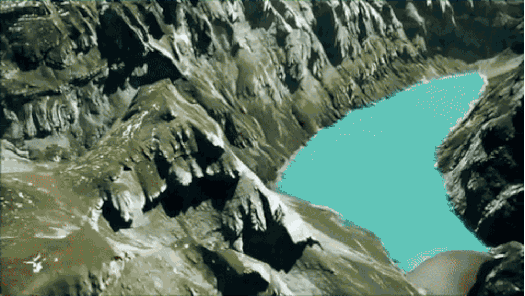
[Animation credit: GE Reports]
By Tomas Kellner, GE Reports
Hidden away above the tiny Swiss Alpine town of Linthal, deep inside a snowcapped granite massif, sits Europe's newest engineering marvel. It is a hydropower plant like no other, able to generate as much electricity as a nuclear power plant and, at the flip of a switch, act as a giant battery.
"It's the only grid-scale method of storing energy," says Maryse François, the hydrotechnology leader at GE Renewable Energy, the company that developed the technology powering the site.
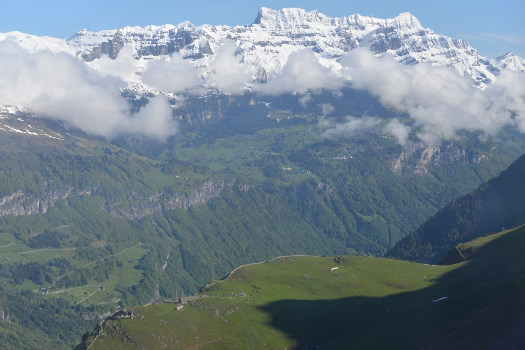
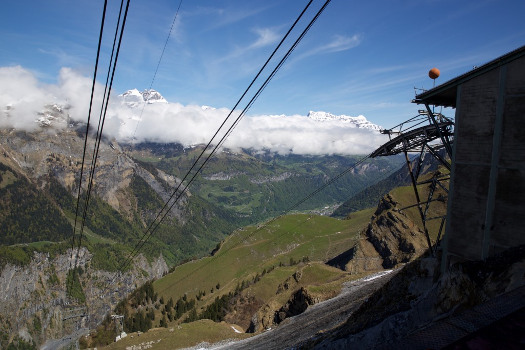
To get to the plant, workers use a cable car to cover the first 1,000 m (3,280 ft) in elevation. [Images credit (three above): GE Reports/Eric Lenoir]
The Linthal facility is a so-called pumped-storage power plant. It generates or stores electricity by moving water between two teal-colored mountain lakes separated by a 630-m cliff (2,000 ft) twice the height of the Eiffel Tower. When the operator, the Swiss utility Axpo, wants to generate electricity, it opens massive steel valves that can withstand titanic pressures and lets the water run down from Lake Mutt, located at 2,490 m (8,100 ft) above sea level, to Lake Limmern, filling up a deep, dammed valley below with nearly 23 billion gal of water (92 million m3). The water runs through four GE pump turbines that turn GE variable-speed motor generators, converting the potential energy in all that falling water into electricity.

The power plant is located above a narrow Swiss valley. The two emerald lakes at the bottom just store water and are not used for power generation. [Image credit: GE Reports/Eric Lenoir]
But if demand for power drops, the plant reverses the flow, pumping water back up to Lake Mutt. "It's as if the system was recharging the upper reservoir," François says. The system "becomes a giant natural battery, ready to be used again when needed."
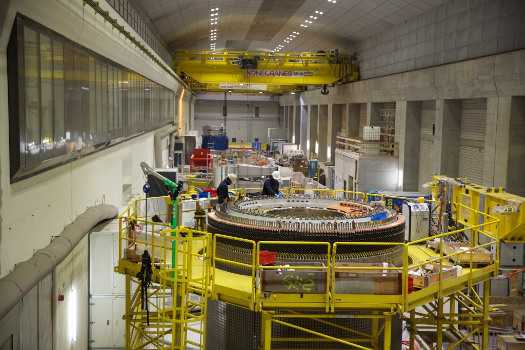
The generator hall deep inside the mountain. In the front, workers are assembling the rotor for one of the pump turbines. Since it's too large to transport through the network of underground tunnels, workers must assemble some equipment on-site. [Image credit: GE Reports/Eric Lenoir]
Pumped storage is not a new idea. But the Linthal plant, the first place where GE installed the variable-speed technology, is different. The technology allows Axpo to fine-tune the plant, precisely monitor the amount of excess electricity in the grid, and move just the right amount in just the right direction. The technology's overall cycle efficiency -- the average difference between energy used for pumping water into the upper lake and electricity generated by "turbining" when it runs downhill -- is as high as 80 percent. "This is as much a power-generation play as it is an economic play," François says (see video below).
The power plant will produce 1,450 MW of renewable electricity when all four of the motor-generators come online -- enough to supply 1 million Swiss homes at peak power.
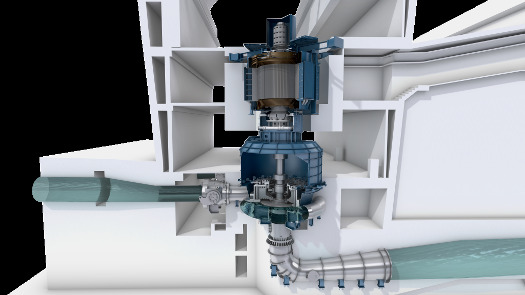
The Linthal power plant will have four variable-speed hydro generators like the one shown above. They allow operators to change output, absorb spikes in demand, and help utilities stabilize the grid. [Image credit: GE Power]
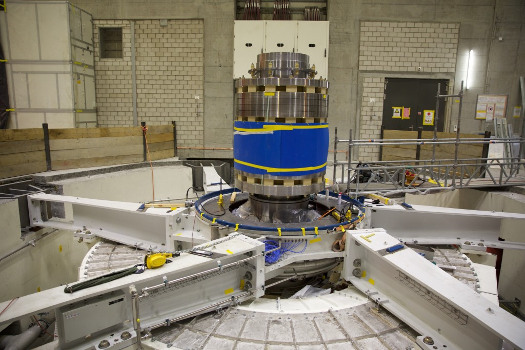
The rotor and a stator after completion. [Image credit: GE Reports/Tomas Kellner]
Read more GE Reports at www.gereports.com
Published June 2016
Rate this article
View our terms of use and privacy policy
